Lindheimer’s Texas
Lindheimer’s Texas highlights the contributions of Ferdinand J. Lindheimer, the Father of Texas Botany. This immigrant from Frankfurt, Germany, lived and collected in Central Texas and pioneered the sciences throughout Texas along with some lesser-known 19th C naturalists.
In his book, Naturalists of the Frontier, Samuel Wood Geiser, chair of the Biology Department at Southern Methodist University from 1924-1957, published essays on 11 men who were influential not only in scientific fields but in their civic and business contributions in the newly annexed State of Texas.
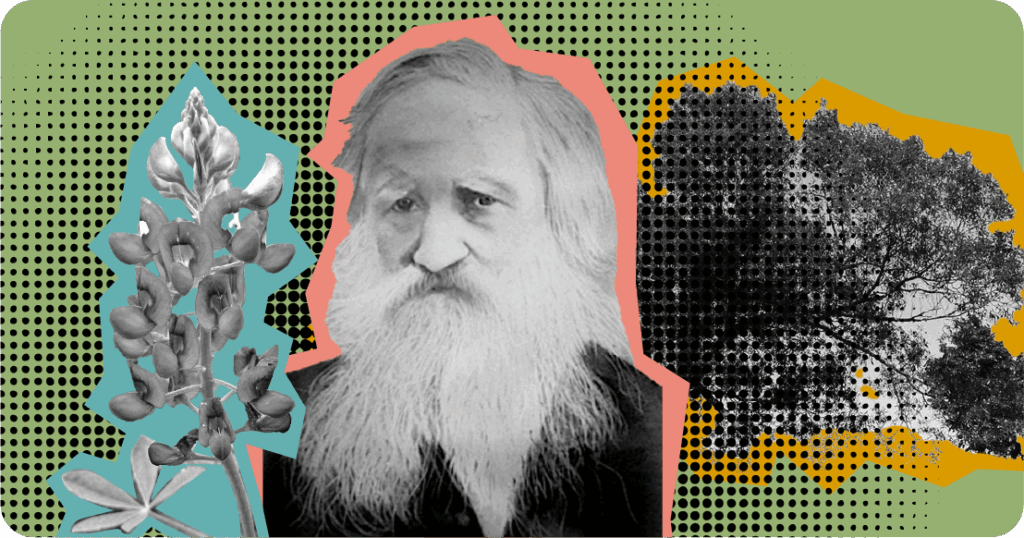
While the naturalists of the Texan frontier are of interest to the historian of science … their careers must be considered always in the light of their social environment. I stress this fact because the historian of scientific exploration in frontier Texas is constantly tempted to deal at length with the social history of the regions as well … Social conditions in early Texas offered many obstacles to the naturalists’ work … while their achievements were due largely to traits of character inherent in themselves, their failures were due in almost every case to the environment
Geisser published two subsequent essays which expanded the list to 343 naturalists who visited and/or lived in Texas between 1820 and 1880. These men and women, from many nationalities, were “writing the book” on 19th C Texas — its flora and fauna, its climate and cultures and its geology and geography — by publishing books, essays, treatises, guides, maps and innumerable letters. They also amassed and dispersed large collections of herbaria, reptiles, insects and drawings of their discoveries. Eventually, Geiser’s list contained over 2,000 names.
Many of these naturalists traveled and collected as a hobby, their occupations as varied as the fauna and flora they were recording. They held positions of leadership in their towns. They were simple farmers. They were doctors and newspaper editors. They were teachers. Mostly, they enjoyed a passion for the land around them and wanted to share this new knowledge with others.
These men and women gave the rest of the United States and the European continent the first real look at the vast unique, unexplored, unpopulated and unimagined place called Texas.
The Sophienburg Museum and Archives partnered with the New Braunfels Independent School District to develop and make available a web-based curriculum featuring Lindheimer to third through fifth grade teachers. The program was made possible in part by a grant from Humanities Texas, the state affiliate of the National Endowment for the Humanities and through partnerships with the Native Plant Society of Texas and the Missouri Botanical Gardens.
Lindheimer’s Texas is introduced to students through a set of 28 informational “cards” and accompanying curriculum ideas that can be reproduced and shared.
Lindheimer’s Texas Lesson Plans
Dichotomous Key

Students will use a dichotomous key to classify random objects, letters, and plants. The dichotomous key is a series of “either/or” observations that are used to identify plants, animals, microbes, diseases, fossils, rocks and birds’ nests. “Dichotomous” refers to the branching nature of the key, with each branch point splitting off into only 2 branches each time. When used in the classification of organisms, either/or decisions are usually based on distinguishing physical features of the organisms being studied. Download and Print PDF
Bees: How They Live Affects How We Live
This lesson is designed to educate students on the history and importance of the honey bee in our local area and worldwide. Students will elicit questions to inspire research that will further their knowledge and understanding of the impact and plight of the honey bee in today’s society. Download and Print PDF
Hybrid Plants
Students will create their own hybrid plant. They will draw, color, and write a paragraph explaining the characteristics of their plant to share with the other students. Download and Print PDF
Preserving Flora
After a study of Texas naturalists and identifying and collecting local flora, students will create artistic sheets of paper out of recycled paper to send to a person of their choosing. Students will learn the art of creating paper, which will help us review basic science concepts before the STAAR science test. These individual works of art will have seeds and flora native to the local area embedded within them so that they may be planted if desired to bring a little bit of the local area to the receiver. Download and Print PDF
Ferdinand Jacob Lindheimer, 1801-1879
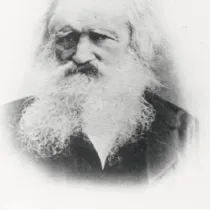
Ferdinand Lindheimer arrived in Texas as it was becoming a republic. Later, he played important roles in the developing New Braunfels community. Lindheimer created the town’s first botanical garden, served as superintendent of the county school, and first justice of the peace. He was also editor and publisher of the Neu-Braunfelser Zeitung. During the Civil War, Lindheimer was the leading voice on politics and economics among German Texans. Today, Ferdinand Lindheimer is remembered as the Father of Texas Botany.
More Information
- Goyne, Minetta A.: A Life Among the Texas Flora, TAMU Press, 1991
- Hale, Douglas: Wanderers Between Two Worlds, Xlibris, 2005
Ferdinand Lindheimer Self-portrait
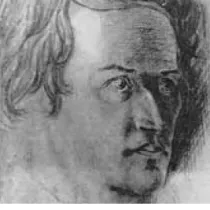
The 33-year-old Ferdinand Lindheimer followed his former teacher Georg Bunsen to America in 1834. Lindheimer soon joined other German adventurers at Engelmann’s Illinois farm about 20 miles from St. Louis. A warmer climate, however, called Lindheimer as the fall season brought colder temperatures. Lindheimer and five companions took a riverboat to New Orleans where the restless Germans had difficulty deciding their next move. Texas beckoned some with offers of affordable land. Others heard a different call and looked beyond the Gulf of Mexico to land with mineral and plant riches described by the scientist and explorer Alexander von Humboldt. Thus began Lindheimer’s and the Friedrich brothers’ journey to Mexico.
More Information
- Goyne, Minetta A.: A Life Among the Texas Flora, TAMU Press, 1991
- Hale, Douglas: Wanderers Between Two Worlds, Xlibris, 2005
Eleanora Reinarz Lindheimer, 1818-1895
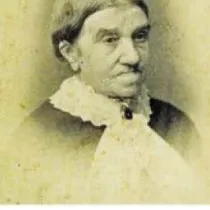
Eleonora Reinarz was 28 years old when she and Ferdinand Lindheimer married. Often left alone for long periods of time while Lindheimer collected plants, she seemed uniquely suited to her life as his wife. Highly skilled at preserving the plant specimens he found while collecting, she thoroughly understood the different processes of drying plants for shipment. Lindheimer treasured and valued Eleonora’s help and wrote in an 1846 letter to Georg Engelmann, “I have … a woman who takes part in all my interests with trust and respect.”
More Information
- Fey, Everett A.: New Braunfels: The First Founders, Eakin Press, 1994
- Goyne, Minetta A.: A Life Among the Texas Flora, TAMU Press, 1991
Herbaria Sheet
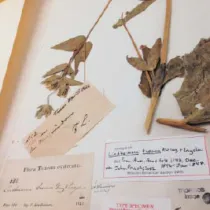
Ferdinand Lindheimer was the first permanent-resident plant collector in Texas. His collections were gathered from coastal regions northward, westward to the Rio Grande, and areas beyond. Credited with the discovery of several hundred plant species and honored with 48 plant species and subspecies that bear his name, Lindheimer shared his dried and mounted specimens (herbaria) with botanists worldwide. In the United States, the Smithsonian Institution alone has more than 2,000 species collected by Lindheimer. Writing in 1915, Charles Winkler credited Lindheimer as “first to discover the wonderful richness of Texas flora.”
More Information
- www.wildflower.org
- www.mobot.org
- Winkler, Chas. H.: “The Botany of Texas” in Bulletin of the University of Texas, 1915, No. 18
Neu-Braunfelser Zeitung
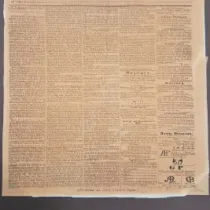
Neu-Braunfelser Zeitung was one of the earliest German-language newspapers in Texas. This forerunner of today’s New Braunfels Herald-Zeitung began weekly bilingual publication in 1852 with Ferdinand Lindheimer as editor & publisher. Through his newspaper, Lindheimer had a great impact on people in the community, teaching them democracy & how to think for themselves. His editorial voice was critical during the Civil War as he used his paper to challenge the new citizens about freedom and what it really meant. Were these German immigrants to support slavery, a practice in their new country but not in their native land? Were they to simply “blend-in”? These challenging questions proved so unpopular that locals threw his printing press into the Comal River. Lindheimer retrieved the press and continued work.
More Information
- Fey, Everett A.: New Braunfels: The First Founders, Eakin Press, 1994
- www.tshaonline.org
Lindheimer’s Sword

The sword in the Lindheimer family home was presented to him by Prince Carl, who described Ferdinand Lindheimer in a letter to the Adelsverein. “Among the Germans lives a botanist. His name is Ferdinand Lindheimer. Appears to be a scholar who is wrapped up in his work. He can be of use to us informing us about the flora on our grant”. The “us” referred to The Society for the Protection of German Immigrants in Texas, known commonly as the Adelsverein. This group was formed in 1842 by German princes to direct German colonization in the Republic of Texas. In late 1844, Prince Carl hired Lindheimer and Ervendberg to bring the first group of immigrants from the Texas coast to New Braunfels.
More Information
- www.wikipedia.org
- Von-Maszewski: Voyage to North America 1844-45, UNT Press, 2000
- Hale, Douglas.: Wanderers Between Two Worlds, Xlibris, 2005
Lindheimer Haus
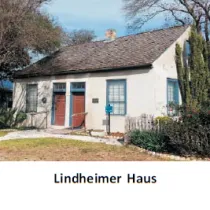
Lindheimer built his saltbox-styled Fachwerk house in 1852 on land given to him by the Adelsverein. Fachwerk, half-timbered and half-masonry construction, had been used for centuries in Europe and was especially popular in Texas German communities. In the Lindheimers’ house, the roof at the back slopes lower than the front roof. Stucco covers Fachwerk on three sides and brick defines the back of the house. Lindheimer Haus is located at 489 Comal Avenue and serves as a small historical museum today. In 1968 the property was donated by Lindheimer’s family to New Braunfels Conservation Society and was placed on the National Register of Historic Places.
More Information
Lindheimer Mural
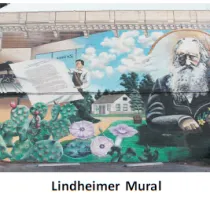
Located at 165 S. Seguin Avenue, the Lindheimer Mural was painted by San Antonio artist Alex Brochon and features Ferdinand Lindheimer, Father of Texas Botany. The mural was dedicated May 21, 2001, in celebration of Lindheimer’s 200th birthday and to honor his botanical achievements. The mural also depicts representations of Lindheimer’s varied lifestyle and accomplishments. What flower do you think that is in his hands?
More Information
Lindheimers’ Graves
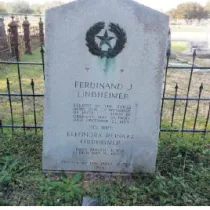
The graves of Ferdinand and Eleonora Lindheimer can be found in Comal Cemetery between the outer fence running along Peace Street and Avenue B. New Braunfels Public Library is nearby. As part of the 1936 Texas Centennial celebration, the state placed a graveside marker. It reads: “A soldier in the Texas Army 1836, a botanist of note. Erected by the State of Texas 1936” The Lindheimer graves are tended by the New Braunfels Garden Club.
More Information
Lindheimer’s Beeblossom, Gaura lindheimeri
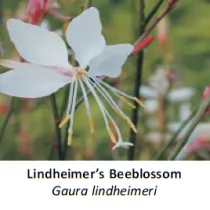
A member of the Onagraceae or evening primrose family, the genus Gaura is composed of rather weedy plants. The Gaura lindheimeriperennial ranges from 2–5 feet in height and has four-petaled flowers. Conspicuously long stamens also distinguish this species. Butterflies love the plant. Asa Gray cultivated Lindheimer’s gaura and then exhibited it at the Horticultural Society in Boston.
More Information
- www.wildflower.org
- Goyne, Minetta A.: A Life Among the Texas Flora, TAMU Press, 1991
Lindheimer’s morning glory or blue morning glory, Ipomoea lindheimeri
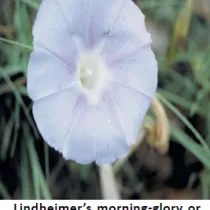
Ipomoea lindheimeri, also called Lindheimer’s morning glory, is a member of the Convolvulaceae family. Ipomoea is the largest genus in the flowering plant family and has some 500 species. The pale-blue to lavender colored flower of Lindheimer’s morning glory opens each morning and closes by noon. The hardy vine likes full sun and blooms April through October. It attracts bees, butterflies, and hummingbirds, making it an important resource for pollinators.
More Information
- www.wildflower.org
- www.wikipedia.org
- Enquist, Marshall: Wildflowers of the Texas Hill Country, Lone Star Botanical, 1987
Lindheimer’s muhly, Muhlenbergia lindheimeri
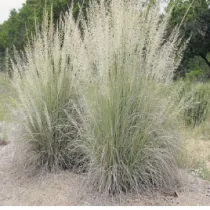
The botanical name for the grass family is Poaceae, which includes Lindheimer’s muhly. Also referred to as big muhly, Muhlenbergia lindheimeri is a large-scale grass, with blue-green leaves and silvery seedheads. This perennial bunchgrass has fine foliage and a fountain-like form. Its 2–5-foot height makes it useful as a landscape screen. Birds eat its seed. Parts of big muhly are used for nesting and denning materials. Big muhly’s extensive root system helps soil stabilization.
More Information
- www.wildflower.org
- Loflin & Loflin: Grasses of the Texas Hill Country, TAMU Press, 2006
Lindheimer’s senna, Senna lindheimeriana
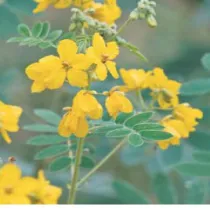
A member of the Fabaceae or pea family, Lindheimer’s senna is a bushy perennial ranging in height from 1½-3 feet and arising from a woody root. The five yellow, oval petals have a distinctive crimp at the edges. Its yellow blooms are often seen in Comal County during the months of September and October. Some of your grandparents may remember this plant because of its dried seed pods, the sound of which reminded them of a rattlesnake. The seeds are also an important source of food for birds.
More Information
- www.wildflower.org
- Enquist, Marshall: Wildflowers of the Texas Hill Country, Lone Star Botanical, 1987
Texas prickly pear, Opuntia engelmannii var. Lindheimeri
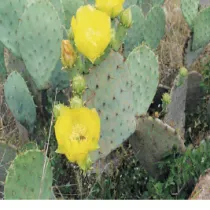
The predominant cactus in the southern part of our state is Texas prickly pear. Its pads (nopales) are up to 1 foot long and are profusely covered with 2-inch spines. The yellow flowers are sometimes marked with orange or red at the base of the petals. This Opuntia has a fascinating host-guest relationship with cochineal scale insects, a source of red dye. Cochineal dye became a valuable export among Spaniards in the New World and was second in importance only to gold. Texas prickly pear is found abundantly throughout Comal County.
More Information
Texas rat snake, Elaphe obsoleta lindheimerii
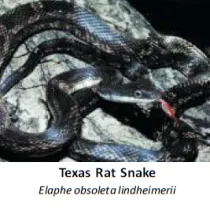
Typically 3-6 feet in length, this great climber can reach bird nests without difficulty. Texas rat snake’s diet includes rodents, eggs, and birds. Texas rat snake can be found in brushy wooded areas, grasslands, swamps, and barns. Their fondness for hen’s eggs has gained them the name “chicken snake.” Although the Texas rat snake is non-venomous, it will bite when threatened. The snake forms a menacing “S” strike position.
More Information
- www.austinreptileservice.net/blotches.html
- www.wikipedia.org
- Pustejovsky, Clint: “Snakes of Central Texas”
Texas yellow star or Lindheimer daisy, Lindheimera texana
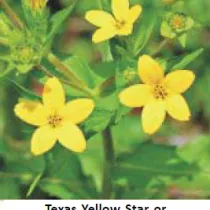
A member of the aster family (Asteraceae), the Lindheimer daisy is 6-24 inches tall and has a lovely yellow flower head. Each 1–1 ¼-inch petal contains two veins and is indented at the tip. Enquist describes “the yellow flower heads as having 5 ray flowers and 2 or 3 times as many disk flowers”. Goyne tells us that Lindheimer was preoccupied with this annual plant which he called “little asteroid.” But Lindheimer had a secret. He dreamed the “little asteroid” would make him immortal in the annals of botany. What do you think?
More Information
- Goyne, Minetta A.: A Life Among the Texas Flora, TAMU Press, 1991
- Enquist, Marshall: Wildflowers of the Texas Hill Country, Lone Star Botanical, 1987
Bees and Pollination
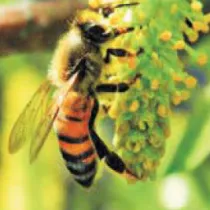
Ferdinand Lindheimer made an important observation when he noticed the lack of bees throughout Central Texas. Peach, plum, and other fruit trees blossomed abundantly but produced poor quality fruit. Without bees to transfer the pollen, there could be no edible fruit. Lindheimer then persuaded Wilhelm Bruckisch to bring Italian black bees to Texas for pollination of fruit trees in the Guadalupe River valley.
More Information
- www.wikipedia.org
- Goyne, Minetta A.: A Life Among the Texas Flora, TAMU Press, 1991
Wilhelm Bruckisch, 1802-1877
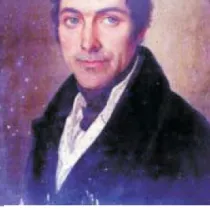
Wilhelm Bruckisch founded the Silesian Beekeepers’ Society in 1845 and worked closely with Pastor Dzierzon, considered the bee master of Europe. Answering Lindheimer’s plea, Bruckisch arrived in New Braunfels in 1853 with Italian black bees. The bees performed the job of pollination so well that early settlers were soon able to harvest larger and more abundant crops. Bruckisch published six editions of Bienenbuch (Bee Book). His work “Bee Culture” was reported in “Annual Report for 1860 (Agriculture)” of the U.S. Commissioner on Patents. Bruckisch was the first person in Texas to become interested in commercial possibilities of bees and introduced the box hive with removable frames.
More Information
Georg Engelmann, 1809-1884
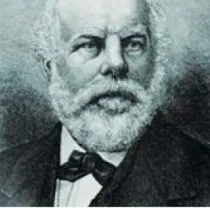
Georg Engelmann immigrated to the United States in 1832 from Germany and ultimately settled in the St. Louis, Missouri, area. He was educated as a medical doctor and as a botanist. Lindheimer once told him: “I cannot think of anything I prefer to wandering around and gathering plants and preserving them.” Later, it would be Engelmann’s correspondence with Lindheimer that served as Lindheimer’s connection to civilization and botanical circles around the world. Engelmann was also scientific advisor to Henry Shaw on the development of what became the Missouri Botanical Garden.
More Information
- www.wikipedia.org
- Goyne, Minetta A.: A Life Among the Texas Flora, TAMU Press, 1991
- Hale, Douglas.: Wanderers Between Two Worlds, Xlibris, 2005
Louis Cachand Ervendberg, 1809-1863
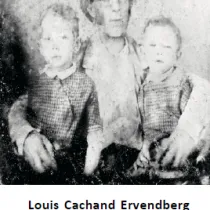
Prince Carl’s sixth report to the Adelsverein described the effect of Rev. Ervendberg’s December 23, 1844, Protestant service for the newly arrived immigrants. “It induced a very earnest and tender feeling in the congregation, & many shed tears of heartfelt emotion.” Delayed by rains, Lindheimer and Ervendberg got these first settlers to New Braunfels on March 21, Good Friday, 1845. Ervendberg became first minister of the German Protestant Church, today’s First Protestant Church. He and his wife established Neu Wied or the Orphans Home near present day Gruene where they cared for 19 orphaned children. Ervendberg was also an accomplished naturalist and botanist. At Neu Wied, he grew silkworms and experimented with exotic wheats. Ervendberg’s tobacco plants made excellent cigars.
More Information
- www.tshaonline.org
- Goyne, Minetta A.: A Life Among the Texas Flora, TAMU Press, 1991
- Geiser, Samuel Wood: Naturalists of the Frontier, SMU Press, 1948
Asa Gray, 1810-1888
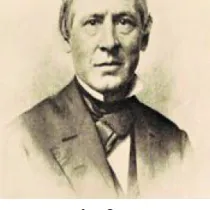
In 1842, Harvard College offered Gray a job teaching botany and overseeing the botanic garden. This gave him the opportunity to collect specimens from others. In 1843, Professor Gray commissioned Lindheimer to make a collection of largely unknown Texas plants and wildlife. In a land terrorized by bandits and Indians, Lindheimer began a 10-year period of collecting plants, which were shipped to Dr. Gray. Today, many of those plants are at Harvard University’s Gray Herbarium. Ultimately, Gray was considered one of the most important botanists in North America.
More Information
- www.huh.harvard.edu
- Goyne, Minetta A.: A Life Among the Texas Flora, TAMU Press, 1991
John Coffee Hays, 1817-1883
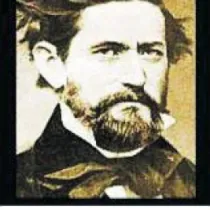
“Jack” Hays was born in Virginia in 1817. He lived in Texas for 13 years and became Texas Ranger extraordinary. Hays mixed a military career with surveying and grew very adept at protecting surveying parties against Indian attacks. Hays is credited with effective use of revolvers and revolutionizing warfare against Texas Indians. Hays also played an important role in Meusebach’s efforts to open the Fisher-Miller Grant to new settlers through his presence at the signing of the Meusebach-Comanche Treaty.
More Information
- Goyne, Minetta A.: A Life Among the Texas Flora, TAMU Press, 1991
- www.tshaonline.org
John O. Meusebach, 1812-1897
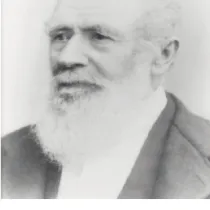
Baron Otfried Hans von Meusebach upon immigrating to the United States took the simpler name, John O. Meusebach. An accomplished botanist, he explored areas in Central Texas with Ferdinand Lindheimer. Meusebach was also greatly interested in the geology and mineralogy of Texas. Meusebach succeeded Prince Carl as Commissioner-General of the Adelsverein. One of his greatest accomplishments was the 1847 Treaty with Comanche Indians permitting safe passage of German settlers to lands beyond Fredericksburg. Ferdinand Lindheimer was part of these negotiations. The lands passed through Indian territories. Meusebach was highly regarded by the Indians who called him El Sol. His red hair reminded them of the sun.
More Information
- King, Irene M.: John O. Meusebach, UT Press, 1967
Chief Satanta
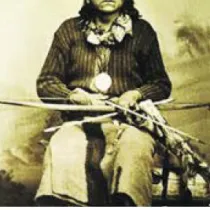
Comanche Indian chief Satanta and Lindheimer were friends. Indians regarded Lindheimer as a “medicine man” because of his work with plants. This regard afforded Lindheimer access to areas which might have been less hospitable to other white men. On a visit to the Lindheimers’ Comal River house, Satanta spotted two-year-old Eugen. The chief offered to trade Lindheimer two nice mules and a young Mexican girl for the lad. The father replied, “No sale!”
More Information
- Goyne, Minetta A.: A Life Among the Texas Flora, TAMU Press, 1991
Eastern Mexico in the Mid-19th Century
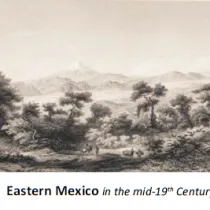
Veracruz, on the eastern coast of Mexico, was a gateway for both adventurers and goods flowing into and out of the country’s interior. A German settlement called El Mirador was established in the fertile highlands above the old port town. Botanical specimens collected at El Mirador were sent to leading European museums. Reports of new and undiscovered plant specimens proved irresistible to Lindheimer. His friends, the Friedrich brothers, had accompanied him to Veracruz and bought land for a coffee plantation and gristmill. Lindheimer first collected plants and lived off the land but later took employment managing a distillery. He remained at El Mirador for 1½ years and later described it as “one of the most beautiful areas of the earth.” Restlessness again overtook him as he realized El Mirador would never bring him fortune. Texas independence might.
More Information
- Hale, Douglas: Wanderers Between Two Worlds, Xlibris, 2005
Early New Braunfels
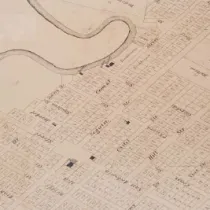
New Braunfels was originally planned as a way station to the Adelsverein’s primary property of the Fisher-Miller Land Grant north of Fredericksburg. As difficulties mounted, many immigrants decided to make New Braunfels their home. Town lots had been platted by Nicolaus Zink, the Adelsverein’s engineer. Each head of a family was to receive a half-acre town lot and a 10-acre farm. The town was laid out with the main street (Seguin Street) running parallel to the Comal River. This arrangement allowed easy access to water. Located on especially arable land on the higher side of the Comal River, Lindheimer’s botanical garden was in a particularly desirable spot.
More Information
- Fey, Everett A.: New Braunfels: The First Founders, Eakin Press, 1994
Las Fontanas — Comal Springs

In 1845, Prince Carl founded New Braunfels and named the city for his German home of Solms-Braunfels. The site was chosen because of the nearby Las Fontanas(Comal Springs). Comal Springs are the largest group of natural springs in the American Southwest and are the headwaters of the 3-mile-long Comal River, said to be the shortest river in the United States. Comal Springs are also the largest artesian springs west of the Mississippi River. Unique underground formations of these springs are an important part of the Edwards Aquifer.
More Information
- Sansom: Water in Texas, UT Press, 2008
- www.edwardsaquifer.net/comal.html
- Von-Maszewski: Voyage to North America 1844-45, UNT Press, 2000
Surrender of Santa Anna by William Henry Huddle
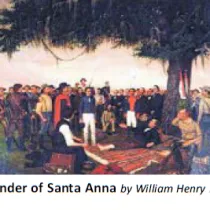
Artist William Henry Huddle painted Surrender of Santa Anna the morning of April 22, 1836, the day after the Battle of San Jacinto. Mexican General Antonio López de Santa Anna, in the uniform of a private soldier, was brought before Texas General Sam Houston as a prisoner of war. Houston, wounded in the battle, rested on a pallet under the oak tree while arranging an armistice with Santa Anna. To the right, seated on a log, was Erastus “Deaf” Smith, famous Texas scout; the captured Mexican battle flags were leaning nearby against the tree. To the left and rear of Houston was his Secretary of War, Thomas Jefferson Rusk, who was standing next to Colonel Mirabeau B. Lamar. More than 30 other historical figures were depicted in this painting. It has been on display in the first floor south wing of the Texas Capitol since February 1891.





